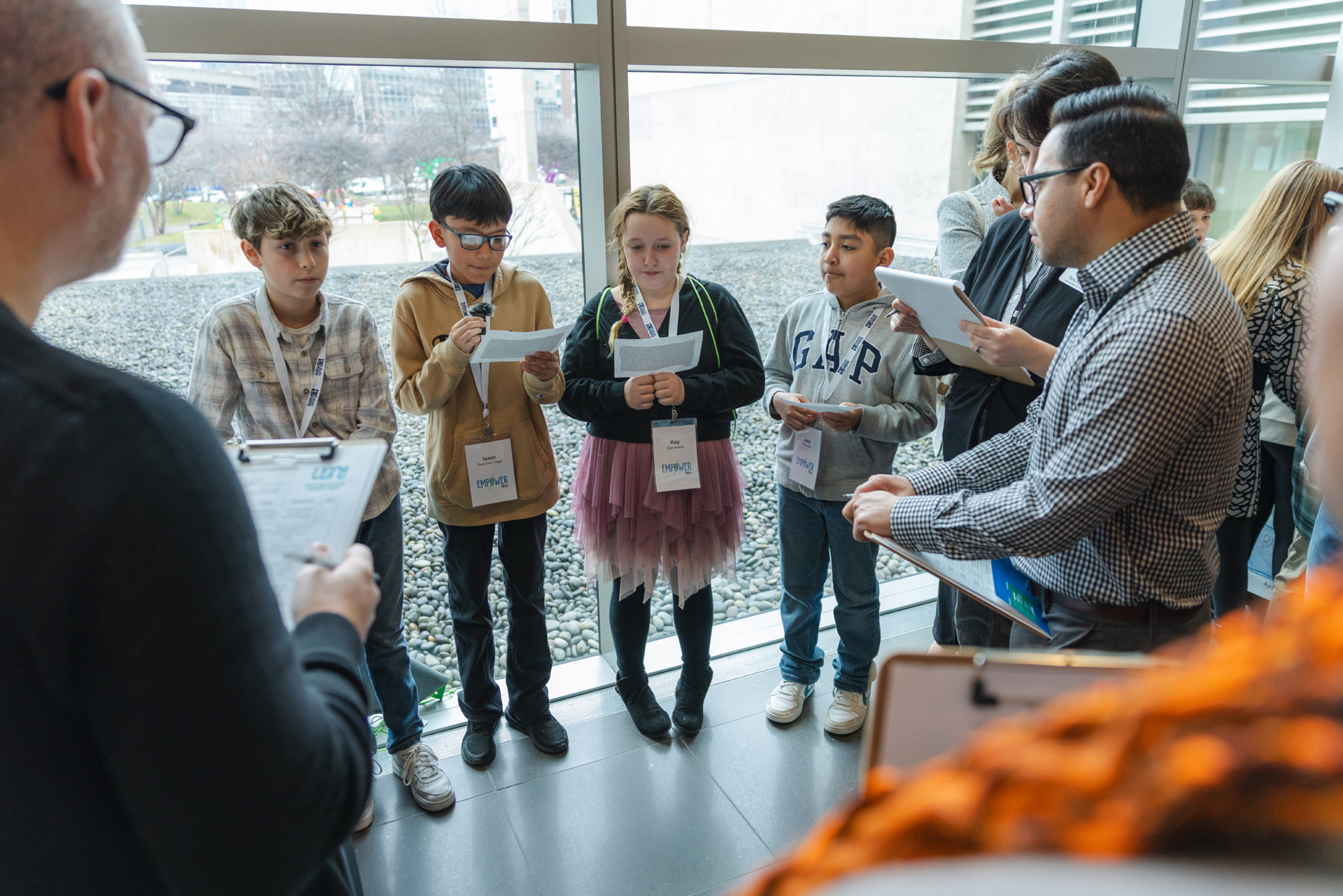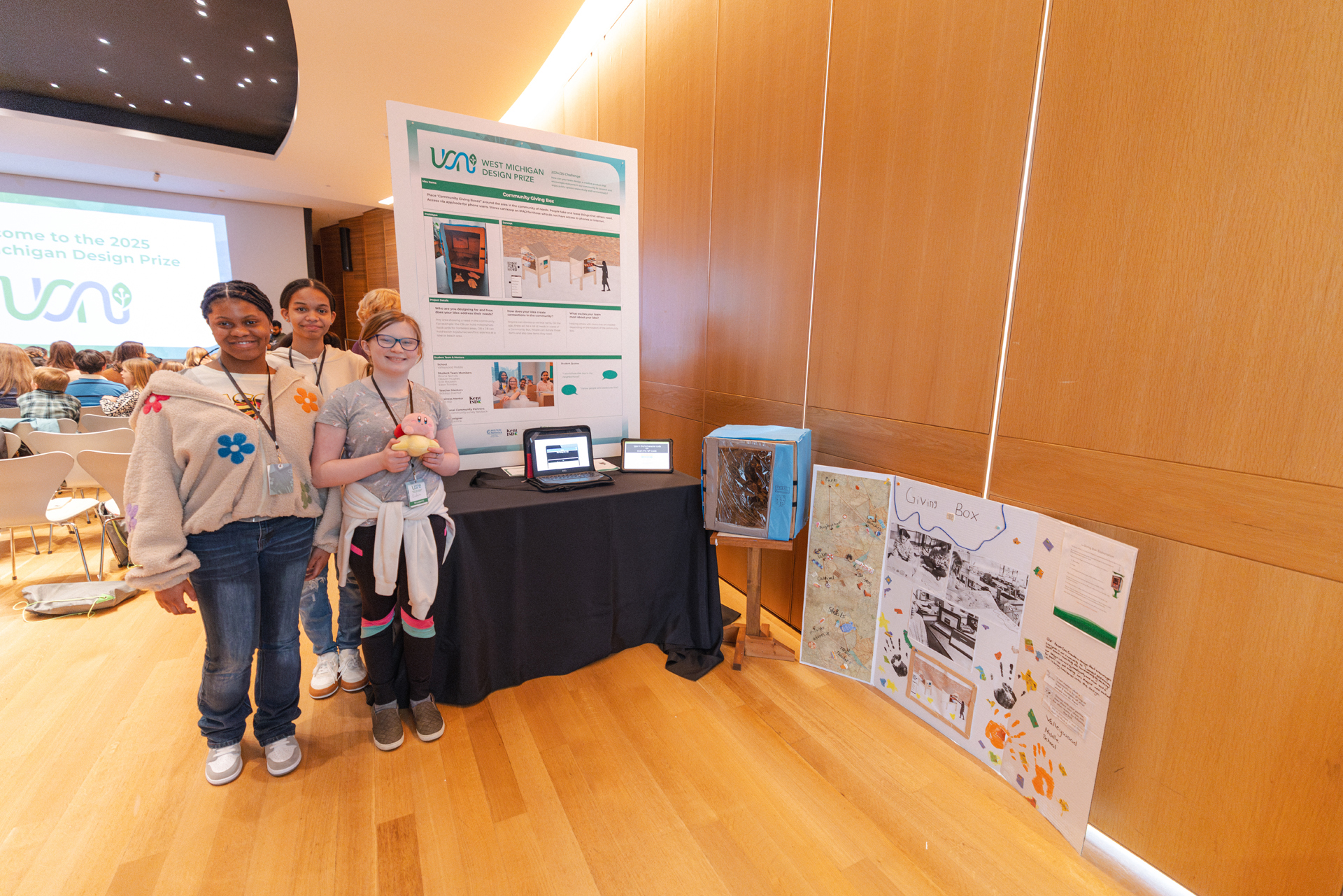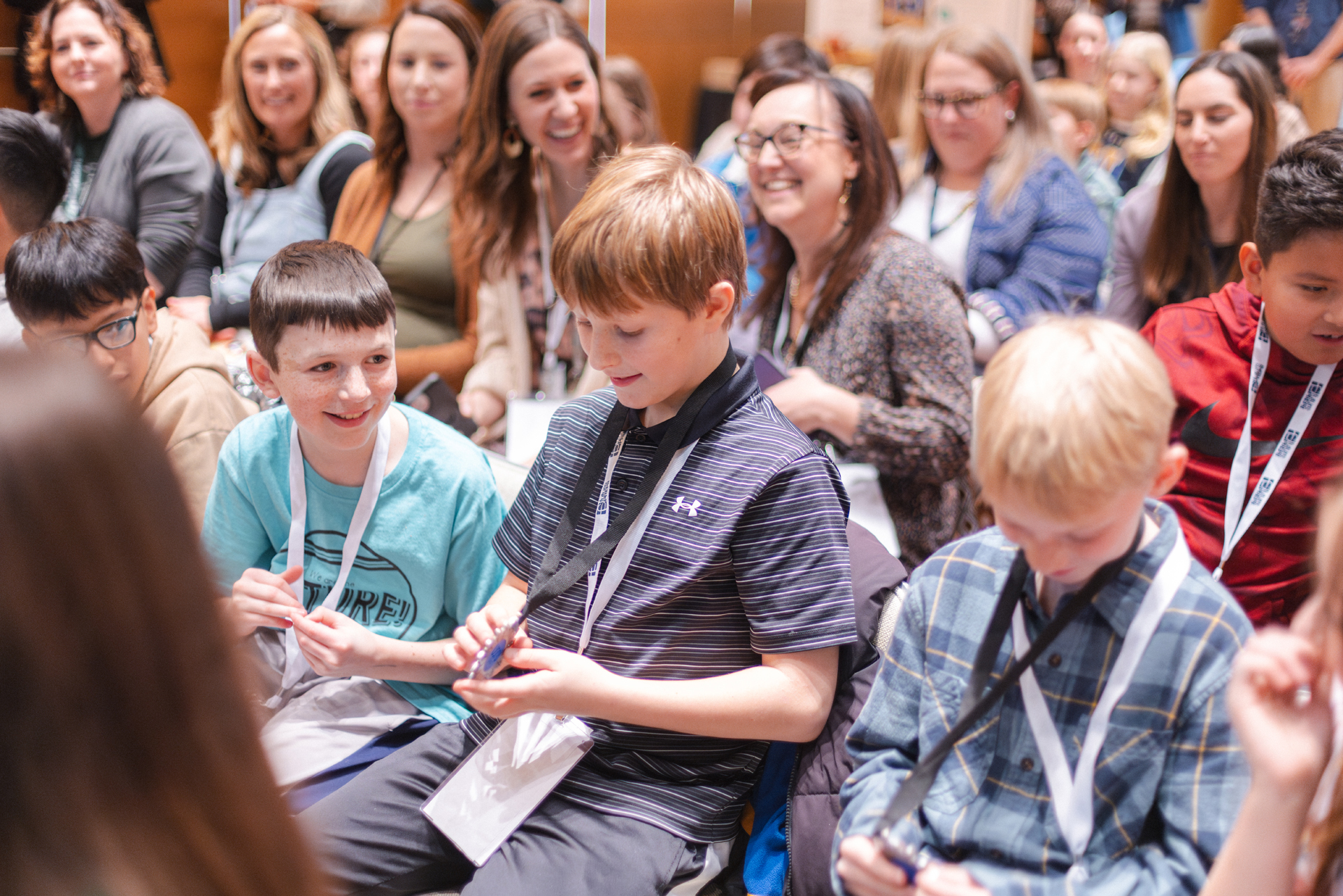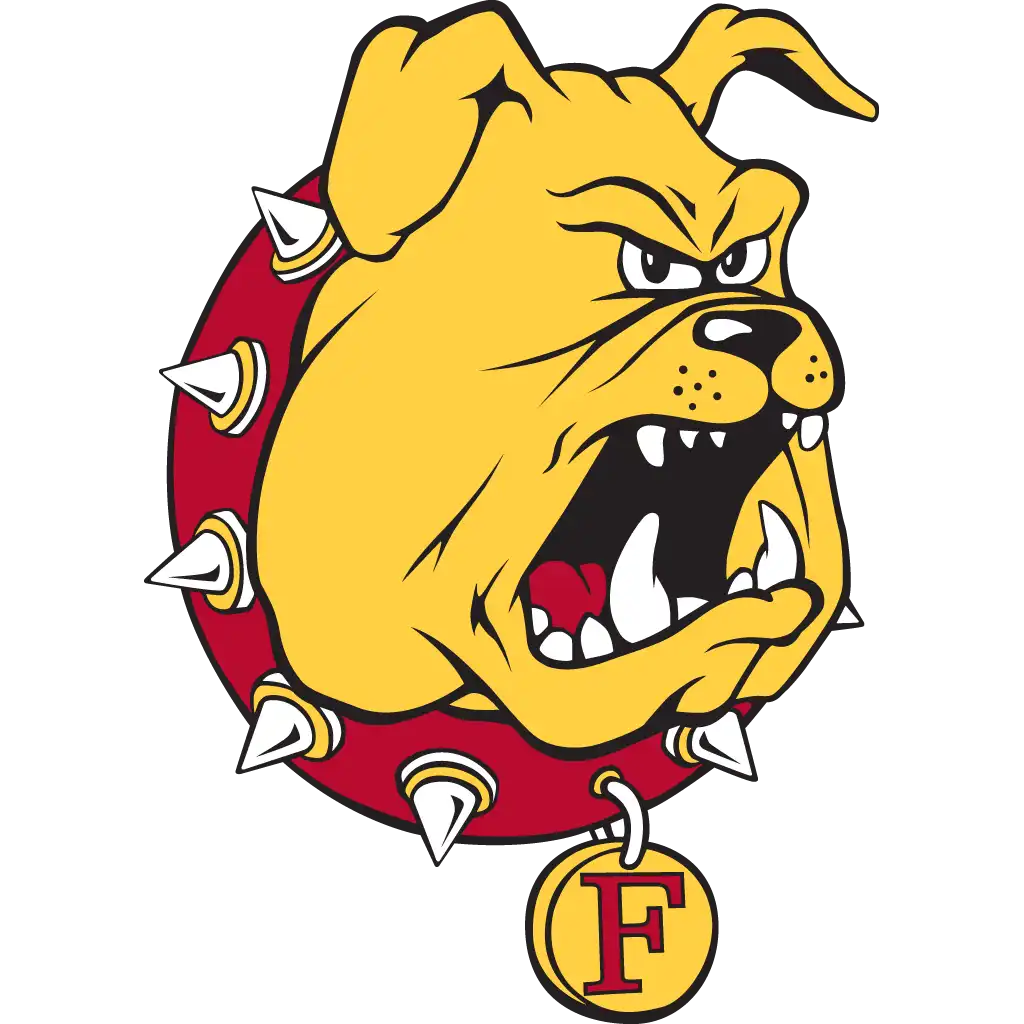June 18, 2025
Ferris State nurturing West Michigan’s future design talent alongside regional partners

Ferris State University’s Kendall College of Art and Design is at the heart of a collaborative project aiming to help West Michigan upper-elementary and middle school students build critical design literacy and future-proof creative problem-solving skills.

The Team Community Giving Box prototype and info poster displayed here.
The inaugural West Michigan Design Prize immersed students from Kent, Muskegon, and Ottawa counties in both the process of design and the region’s design community.
Over a six-month period, student teams were introduced to the concept of design thinking and challenged to propose a product that would encourage members of their local communities to connect and enjoy public spaces in a respectful and harmonious way.
The competition’s collaborative framework enabled student participants to connect with educators, students, and industry leaders from across the regional art and design community.
That included representatives from KCAD and regional intermediate school districts as well as Grand Valley State University, Grand Rapids Community College, The Right Place, Grand Rapids Art Museum, and local business leaders.

Winning students celebrate at the inaugural West Michigan Design Prize.
The West Michigan Design Prize was co-developed by Ginger Rohwer, region director of MiSTEM Network’s Greater West Michigan, which is hosted at GVSU, and KCAD Product Design professor Jon Moroney.
They modeled the project after the statewide Michigan Design Challenge. While that event was focused on the Detroit area, Rohwer and Moroney were eager to introduce local students to West Michigan’s thriving design industries and the many academic and career opportunities in the region.
“It’s rare that students get exposed to design thinking at any level of K-12 education,” Moroney said. “As an educator, I’m happy to increase awareness of design as a career field, but it’s bigger than that—developing empathy, iterating around concepts, and testing ideas by prototyping are transferable to pretty much anything you do in your career.”
While previous design competitions have focused on older students, Moroney emphasizes that from a developmental standpoint, starting earlier is always better.
“As students are developing both intellectually and socially, it's a perfect opportunity to instill design thinking values and principles so that they can apply them on their own as they move forward in the rest of their educational journey,” he said.
Rohwer and Moroney began planning the event in early 2024, while the three ISDs recruited teachers and students and handled communication and logistics. After a kickoff at The Right Place in September, the students began meeting with their teachers, who walked them through a sample design cycle.
The students then broke into small groups to investigate the challenge, brainstorm solutions, and seek feedback from mentors in the local design industry—many of whom were KCAD alumni or adjunct instructors.
By mid-December, the students were refining their ideas and iterating on prototypes. After finalizing their plans, they collaborated with a team of KCAD design students via email to create visual renderings and presentation posters.
Finally, the students and their teachers gathered at the GRAM in late February to pitch their solutions to a jury of creative professionals from the community and cast their own votes for the Student Choice awards.
For many students, it was the first opportunity to think about ideas as not right or wrong, but as things that could be refined over time.
“When students can ideate, try something, get feedback, and change or fix it, they can experience iterative design cycles,” Rohwer said. “They learn to see that as a positive experience, not a failure.”
This multi-tiered collaboration introduced the students to a wide range of design courses and careers while allowing them to have their ideas seen and heard. To participating educators like Erin Carmody, who teaches at Lakeshore Middle School in Grand Haven, helping students cultivate a sense of agency was one of the most valuable parts of their experience.
“For students to see that there’s value in their ideas right now at this stage in their lives is powerful,” Carmody said. “We know that students are more engaged when they feel that their learning has purpose, and when other people are invested in what they’re working on. It prepares them to one day step out into the world with the sense that ‘We’ve got this. Let’s work together. Let’s do something. Let’s make it happen.’”
Carmody mentored her team alongside Katie Ingram, an instructional coach at Lakeshore. Through their project Pavement to Palettes—aimed at fostering connection in Grand Haven by transforming crosswalks and sidewalk refuse bins into works of public art that the community would have a hand in selecting—the students got a taste of what it takes to bring ideas to life in the real world, where there are many different factors and stakeholders to be accounted for.
“It’s about helping them build that resiliency and flexibility that makes them ideal graduates for where the future is heading,” Ingram said. “We want students to be agile problem solvers who know how to think on their feet, use their creativity, and work as a team.”
Pavement to Palettes was one of three teams at the middle school level to be selected for an award by the competition’s jury panel of local industry professionals.
Other awarded projects included a machine that turns trash into small charms or toys to encourage the community to pick up litter, and an expanded take on the ‘little free library’ model that, instead of books, fills the structure with packaged food and personal items donated by community members for those in need.
At the elementary level, award winners included a collaborative community geocaching activity powered by RC cars; a Ninja Warrior-style obstacle course at a community park, and Broom-Bruh, a Roomba-inspired robot to assist in the cleaning of public restrooms.
Student participants had the opportunity to choose their favorites in both levels as well, with Pavement to Palettes and Broom-Bruh receiving the most votes.
Winning teams received Olympic-style medals that had been designed and produced by students in a mechanical and architectural design class at GRCC. Meanwhile, students from GVSU’s Visual and Media Arts program captured video of the event and livestreamed the awards ceremony for community viewing.
Rohwer believes West Michigan was a particularly fertile area to test the pilot program.
“People in other regions have asked me how to find business partners and get counties to work together, and I feel like the region itself has a distinctive spirit of collaboration,” she said. “The institutions were happy to come together, and that says something significant about the area and the spirit of collaboration that's here.”
Moroney said the participating businesses brought a deep level of investment to the table.
“The businesses that were engaged would have been happy to support their local school districts, but it wasn't a just do-good, feel-good thing,” he said. “I think they got involved because they also share the mission to develop more creative talent and help it stay here in West Michigan.”
Following a successful first year, organizers are looking forward to repeating the competition, using their own observations and feedback to iterate and improve on the process. Watch for more information about future plans for the West Michigan Design Prize in August of 2025.

